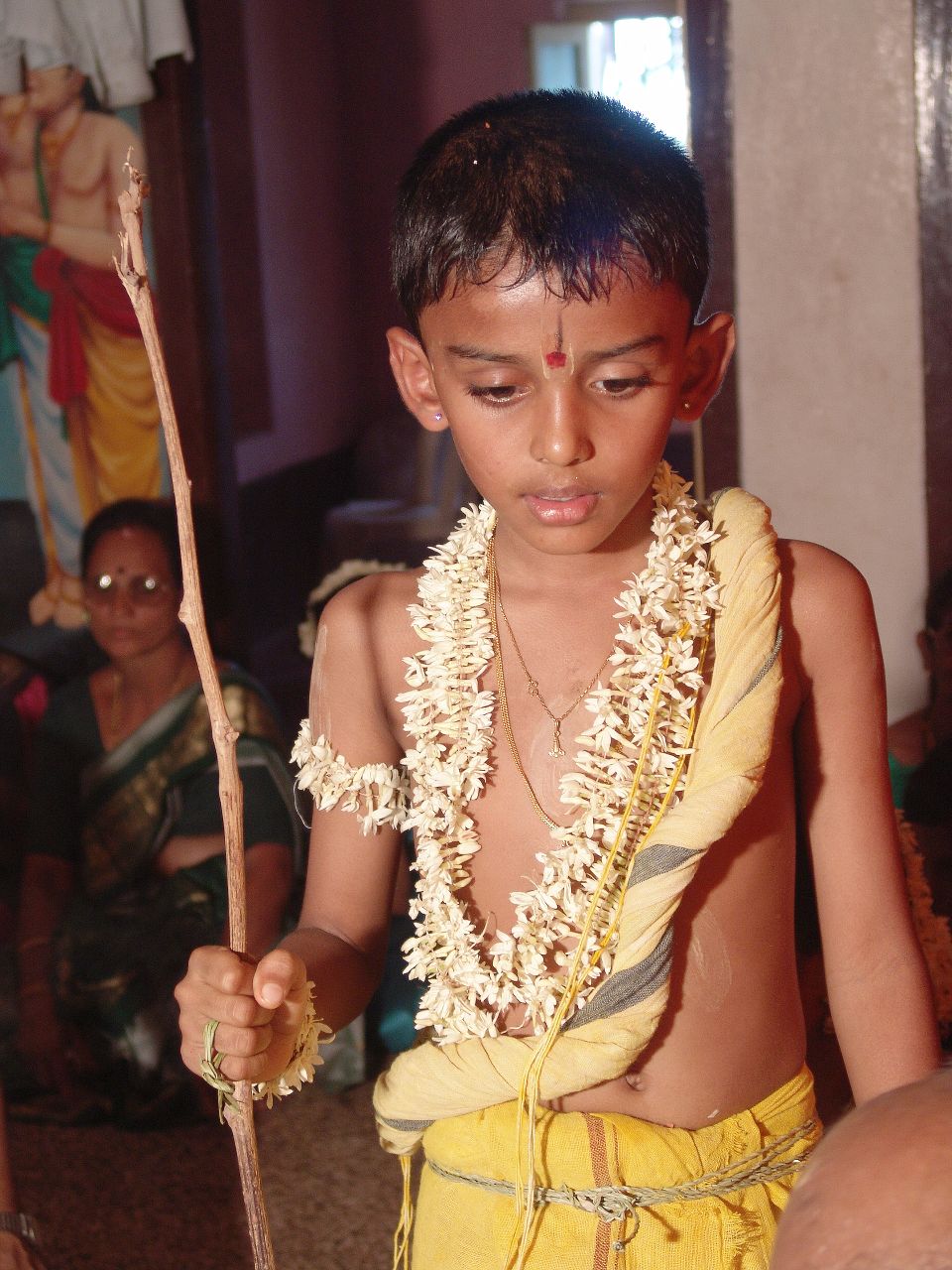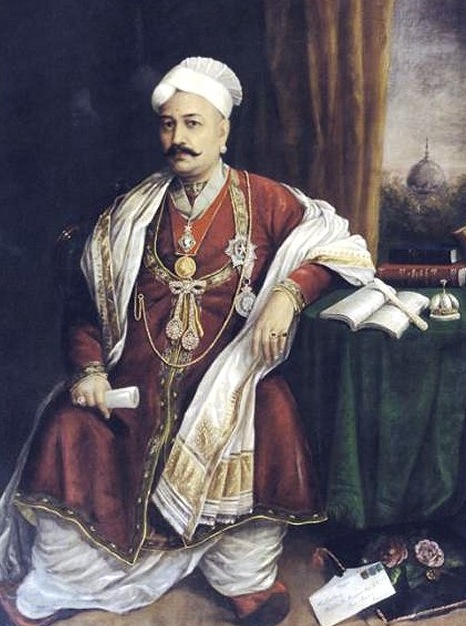|
Tuluva Brahmin
Tulu Brahmins or Tuluva Brahmins are the inhabitants of Tulu Nadu, also considered a part of Parashurama Kshetra which extends to Kerala. They consist of following: Sthanika Brahmins, also called "Sthanika Tulu Brahmins" or "Tulu Brahmins" are the original inhabitants of Tulu Nadu whose history predates 380 B.C. The remaining Brahmins of tulunadu are migrant exodus from Ahichatra of northern part of India by Kadambas (possibly Rai Bareilly),and also from godavari basin in Andhra Pradesh occurring in two time lines, First migration:8th century A.D Havyaka Brahmins Sakalpuri Havyaka Brahmins Second migration:11-13 Century A.D *Nambudri Brahmins *Shivalli Brahmins *Chitpavan Brahmins *Karhade Brahmins *Kota Brahmins *Koteshwara Brahmins *Deshastha Brahmins Deshastha Brahmin is a Hindu Brahmin subcaste mainly from the Indian state of Maharashtra and northern area of the state of Karnataka. Other than these states, according to authors K. S. Singh, Gregory Naik and P ... [...More Info...] [...Related Items...] OR: [Wikipedia] [Google] [Baidu] |
Tulunadu
Tulunad or Tulu Nadu, also called Bermere sristi or Parashurama Srishti, is a region and a proposed state on the southwestern coast of India. The Tulu people, known as 'Tuluva' (plural 'Tuluver'), speakers of Tulu, a Dravidian language, are the preponderant ethnic group of this region. South Canara, an erstwhile district and a historical area, encompassing the undivided territory of the contemporary Dakshina Kannada and Udupi districts of Karnataka State and Kasaragod district of Kerala state forms the cultural area of the Tuluver. Historically, Tulu Nadu lay between the Gangavalli River (Uttara Kannada district) in the north and the Chandragiri River ( Kasaragod district) in the south. Currently, Tulu Nadu consists of the Dakshina Kannada and Udupi districts of Karnataka state and Kasaragod district of Kerala state. This region is not an official administrative entity. Mangalore, the fourth largest (in terms of area and population) and a major city of Karnataka is the ... [...More Info...] [...Related Items...] OR: [Wikipedia] [Google] [Baidu] |
Sthanika Brahmins
Sthānika Brāhmins belong to Hindu Tuluva Smartha Brahmin group. They are the oldest Tulu Brāhmins primarily from the coastal Karnataka (Kanara) also known as Parasurama Kshetra..They are the main Prathistapanacharyas/Founders of all ancient temples of tulunadu. They are one of the oldest brahmins of South India and are referred to in many ancient historical epigraphical inscriptions as; Buddhivantha, Sthaneekam, Sthanapanthulu, Sthanadhikari, Sthanatthar, Sthalatthar, Sthanapadiyan, Thaniker, Sthanikar, Sthānādhipathi, Sthānādhyaksha, Naga brahmins, Nager brahmins, Nagoji brahmins, Tuluva brahmins. Sthānika Brahmins of south canara are referred to as Subrahmanya Sthānika Tulu Brāhmins as Lord Subrahmanya is their kuladevata and Kukke subramanya temple was their main center until the 16th century. Sthānika Brāhmins are followers of Advaita Philosophy and practice the Panchayatana form of worship. They are disciples of the Sri Sringeri Jagadguru Samsthanam from the ... [...More Info...] [...Related Items...] OR: [Wikipedia] [Google] [Baidu] |
Havyaka Brahmins
Havyaka Brahmins are the Hindu Pancha Dravida Vedic Brahmins from the Indian state of Karnataka. Havyakas profess the Advaita philosophy propounded by Adi Shankaracharya. Most Havyakas can trace their immediate ancestry to either Sirsi, Uttara Kannada, Shivamogga, Udupi, Dakshina Kannada or Kodagu districts of Karnataka and Kasaragod district of Kerala. Etymology The word Havyaka according to a linguistically correct derivation by Shri Sediyapu Krishna Bhat comes from Ahichchatra Bhrahmana: the community coming from Ahichchtra to Talagunda/Banavasi brought by Kadamba king Mayura Verma. According to Sediyapu, the word "Havyaka" is a Sanskritization of Ahika-Havika. This is supported by inscriptions. Sanskrit scholar Mahamahopadhyaya Nadahalli Ranganatha Sharma rejects Havya+Kavya derivation as grammatically incorrect. The word Havyaka was not used in official records until 1928 including in mutts and there is no basis for it in inscriptions. The name "Haiga", "Havika", "Have ... [...More Info...] [...Related Items...] OR: [Wikipedia] [Google] [Baidu] |
Nambudri Brahmins
The Nambudiri (), also transliterated as Nampoothiri, Nambūdiri, Namboodiri, Nampoothiri, and Nampūtiri, are a Malayali Brahmin caste, native to what is now the state of Kerala, India, where they constituted part of the traditional feudal elite, owning a large portion of the land in the region of Malabar until the Kerala Land Reforms starting in 1957, and intermarrying with the Nair monarchs and aristocracy through sambandham. They have historically been distinguished by rare practices such as the adherence to Śrauta ritualism, the Pūrva-Mīmāṁsā school of Hindu philosophy, and orthodox tradition, as well as many idiosyncratic customs unique among Brahmins, including primogeniture. Cyriac Pullapilly mentions that the dominating influence of the Nambudiris was to be found in all matters: religion, politics, society, economics and culture of Kerala. History Origin Nambudiri mythology associates their immigration to Kerala from the banks of Narmada, Krishna, Kaveri r ... [...More Info...] [...Related Items...] OR: [Wikipedia] [Google] [Baidu] |
Shivalli Brahmins
The Shivalli Brahmins are a Hindu community in Karnataka. They are divided into two groups, the first of which follows the Dvaita philosophy founded by the Vaishnavism, Vaishnava saint Madhvacharya of Udupi are called Madhva Brahmins, Shivalli Madhva Brahmins, and the second of which follow the Advaita philosophy of Adi Shankara and are known as Shivalli Smarta Brahmins, Shivalli Smartha Brahmins. Majority of Shivalli Brahmins are Madhvas and only a few of them are Smarthas. Udupi cuisine Shivalli Brahmins are famous for ''Udupi hotels'' (vegetarian restaurants) known for serving typical south Indian dishes like idli, vada (food), vada, Dosa (food), dosa, shira and upma etc. Shivalli Brahmins have a unique style of cooking, serving and eating meals. The meal is served on a plantain (banana) leaf and is usually eaten by hand, seated with padmasana like position on the floor. As per traditions male members must be bare-chested while eating a meal and must not talk except for dev ... [...More Info...] [...Related Items...] OR: [Wikipedia] [Google] [Baidu] |
Chitpavan Brahmin
The Chitpavan Brahmin or Konkanastha Brahmin is a Hindu Maharashtrian Brahmin community inhabiting Konkan, the coastal region of the state of Maharashtra. Initially working as messengers and spies in the late seventeenth century, the community came into prominence during the 18th century when the heirs of Peshwa from the Bhat family of Balaji Vishwanath became the de facto rulers of the Maratha empire. Until the 18th century, the Chitpavans were held in low esteem by the Deshastha, the older established Brahmin community of Maharashtra region. As per Jayant Lele, the influence of the Chitpavans in the Peshwa era as well as the British era has been greatly exaggerated because even during the time of the most prominent Peshwas, their political legitimacy and their intentions were not trusted by all levels of the administration, not even by Shivaji's successors. He adds that after the defeat of Peshwas in the Anglo-Mahratta wars, Chitpavans were the one of the Hindu communities ... [...More Info...] [...Related Items...] OR: [Wikipedia] [Google] [Baidu] |
Karhade Brahmin
Karhaḍe Brahmins (also spelled as Karada Brahmins or Karad Brahmins) are a Hindu Brahmin sub-caste mainly from the Indian state of Maharashtra, but are also distributed in states of Goa, Karnataka and Madhya Pradesh. Classification Along with the Deshastha and Konkanastha Brahmins, the Karhade Brahmins are referred to as Maharashtrian Brahmins. Based on Veda and Vedanta Karhade Brahmins are essentially Rigvedi Brahmins who follow the Ashwalayana Sutra and belong to Shakala Shakha. Karhade Brahmins are divided into two groups based on the Vedanta they follow, the first of which follows the Advaita Vedanta of Adi Shankara and the second of which follows the Dvaita Vedanta of Madhvacharya. Hence, Karhade Brahmins have both Smarthas and Madhvas (also known as ''Bhagvats'' or Vaishnavas) among them. Like their Deshastha counterparts, traditionally the karhade allowed cross-cousin marriages. ;Sub-division and other claims There are three divisions of Karhade Brahmins - Karhade ( ... [...More Info...] [...Related Items...] OR: [Wikipedia] [Google] [Baidu] |
Kota Brahmins
Kota Brahmins are a Hindu Brahmin subcaste mainly from the Indian state of Karnataka. Kota Brahmins take their name from their native village Kota. They speak a Kannada different from the other regional dialects. Kota Brahmins are mainly concentrated in the villages of Kota of Udupi district. Kotas follow Smarta tradition. The Guru Narasimha Temple, Saligrama is important to them. See also * Kannada Brahmins Kannada Brahmins are Kannada-speaking Brahmins, primarily living in Karnataka, although a few of them have settled in other states like, Telangana, Andhra Pradesh, Kerala and Tamil Nadu. They belong to one of the three main sects: Smartism, Sadh V ... References External links Kootabandhu.org Kannada Brahmins [...More Info...] [...Related Items...] OR: [Wikipedia] [Google] [Baidu] |
Koteshwara Brahmins
Koteshwara Brahmins (also known as Koteshwara Magane Brahmins) are a Hindu Brahmin subcaste mainly from the Indian state of Karnataka. The community is mainly concentrated in the Koteshwara, Kundapur, and surrounding areas of Udupi district in Karnataka. The community takes its name from the village Koteshwara, which is their native place. Koteshwara Brahmins follows the Dvaita Vedanta propounded by Madhvacharya and are followers of Sodhe Vadiraja Swami Matha. See also * Kannada Brahmins Kannada Brahmins are Kannada-speaking Brahmins, primarily living in Karnataka, although a few of them have settled in other states like, Telangana, Andhra Pradesh, Kerala and Tamil Nadu. They belong to one of the three main sects: Smartism, Sadh V ... References Kannada Brahmins Mangalorean society Brahmin communities of Karnataka {{India-ethno-stub ... [...More Info...] [...Related Items...] OR: [Wikipedia] [Google] [Baidu] |
Deshastha Brahmins
Deshastha Brahmin is a Hindu Brahmin subcaste mainly from the Indian state of Maharashtra and northern area of the state of Karnataka. Other than these states, according to authors K. S. Singh, Gregory Naik and Pran Nath Chopra, Deshastha Brahmins are also concentrated in the states of Telangana , Andhra Pradesh and Madhya Pradesh Author Pran Nath Chopra and journalist Pritish Nandy says, "Most of the well-known saints from Maharashtra, Karnataka and Andhra Pradesh were Deshastha Brahmins". The mother tongue of Deshastha Brahmins is either Marathi or Kannada. Some Deshasthas who settled in Telugu states also adopted Telugu as their mother tongue. Over the millennia, the Deshastha community has produced Mathematicians such as Bhāskara II, Sanskrit scholars such as Bhavabhuti; Bhakti saints such as Dnyaneshwar, Sripadaraja, Eknath, Purandara Dasa, Samarth Ramdas and Vijaya Dasa; Logicians such as Jayatirtha and Vyasatirtha. The traditional occupation of Deshastha Brahm ... [...More Info...] [...Related Items...] OR: [Wikipedia] [Google] [Baidu] |
Brahmin Communities Of Karnataka
Brahmin (; sa, ब्राह्मण, brāhmaṇa) is a varna as well as a caste within Hindu society. The Brahmins are designated as the priestly class as they serve as priests (purohit, pandit, or pujari) and religious teachers (guru or acharya). The other three varnas are the Kshatriya, Vaishya and Shudra. The traditional occupation of Brahmins is that of priesthood at the Hindu temples or at socio-religious ceremonies, and rite of passage rituals such as solemnising a wedding with hymns and prayers.James Lochtefeld (2002), Brahmin, The Illustrated Encyclopedia of Hinduism, Vol. 1: A–M, Rosen Publishing, , page 125 Traditionally, the Brahmins are accorded the highest ritual status of the four social classes. Their livelihood is prescribed to be one of strict austerity and voluntary poverty ("A Brahmin should acquire what just suffices for the time, what he earns he should spend all that the same day"). In practice, Indian texts suggest that some Brahmins historically ... [...More Info...] [...Related Items...] OR: [Wikipedia] [Google] [Baidu] |





_Bhumi_Puja%2C_yajna.jpg)